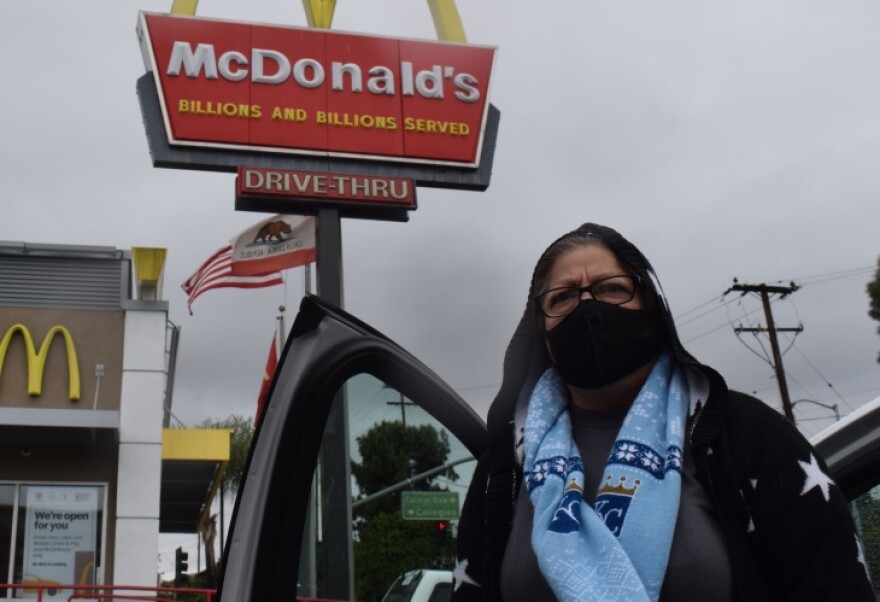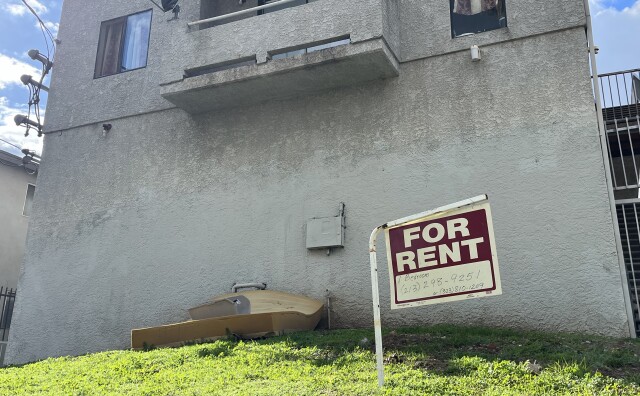Cramped Kitchens And Crowded Homes Are A Deadly Combo For LA's Fast Food Workers

For fast food workers in Los Angeles, long-standing issues including low pay, cramped kitchens and crowded housing have become a dangerous combination during the COVID-19 pandemic.
A study released today by the UCLA and UC Berkeley Labor Centers highlights difficult working conditions in L.A. County's fast food sector, which employs nearly 150,000 workers.
Reviewing available data on the industry, researchers found that the majority of fast food workers in L.A. are female and Latina. It's rare for them to earn much more than minimum wage. Between 2017 and 2019, even the highest paid fast food workers — those in the top 10% of earners — made only $15.22 per hour.
Researchers say low wages make it difficult for fast food employees to make ends meet, and more than two-thirds of workers in L.A. live in a household where family members are enrolled in public assistance programs such as Medicaid or SNAP (formerly known as food stamps). They estimate the total cost of this aid at $1.2 billion in L.A. County.
Most of L.A.'s fast food workers are renters, and more than half of them spend at least 30% of their income on rent. They also tend to live in larger, multi-generational homes. Nearly 70% live in households with at least four members. Close to half live in homes with five or more people.
Overcrowded housing has become a major public health concern during the pandemic, especially for frontline workers at risk of contracting COVID on the job then infecting family members at home.
UCLA Labor Center research director Saba Waheed said fast food workers tend to skew younger, but a third of them live with someone 55 or older.
"These are very full households. It's not just a workplace risk. It is a household risk. It is a family risk. It is a community risk," Waheed said.
Dozens of coronavirus outbreaks at fast food establishments have been reported in Los Angeles County since last summer.
The report finds that social distancing in the kitchen can be a challenge. Workers also say mask mandates are not always followed inside fast food establishments. Research has shown that, of all occupations, cooks have seen the biggest increase in mortality during the pandemic.
L.A. County's Board of Supervisors commissioned the study following reports of McDonald's workers in Boyle Heights being fired for demanding safer working conditions.
Our news is free on LAist. To make sure you get our coverage: Sign up for our daily newsletters. To support our non-profit public service journalism: Donate Now.
-
The severe lack of family friendly housing has millennial parents asking: Is leaving Southern California our only option?
-
As the March 5 primary draws closer, many of us have yet to vote and are looking for some help. We hope you start with our Voter Game Plan. Since we don't do recommendations, we've also put together a list of other popular voting guides.
-
The state's parks department is working with stakeholders, including the military, to rebuild the San Onofre road, but no timeline has been given.
-
Built in 1951, the glass-walled chapel is one of L.A.’s few national historic landmarks. This isn’t the first time it has been damaged by landslides.
-
The city passed a law against harassing renters in 2021. But tenant advocates say enforcement has been lacking.
-
After the luxury towers' developer did not respond to a request from the city to step in, the money will go to fence off the towers, provide security and remove graffiti on the towers.






